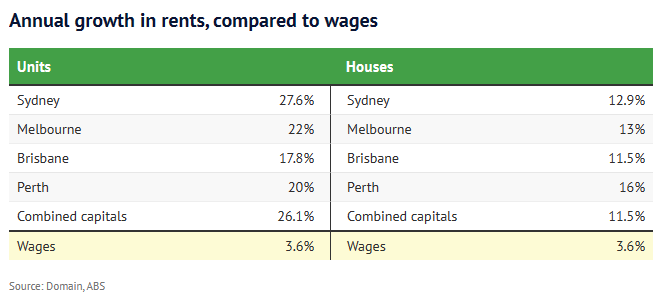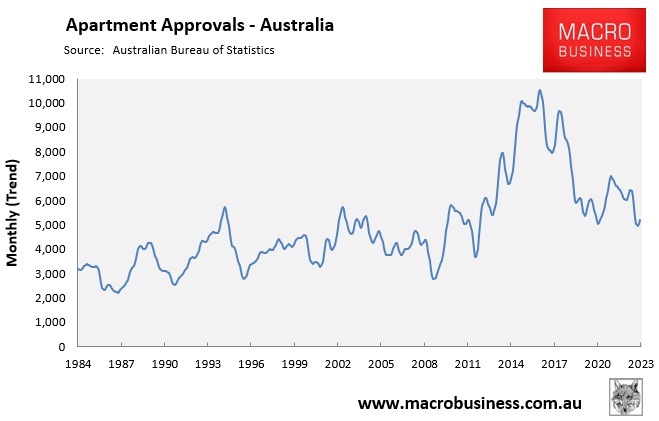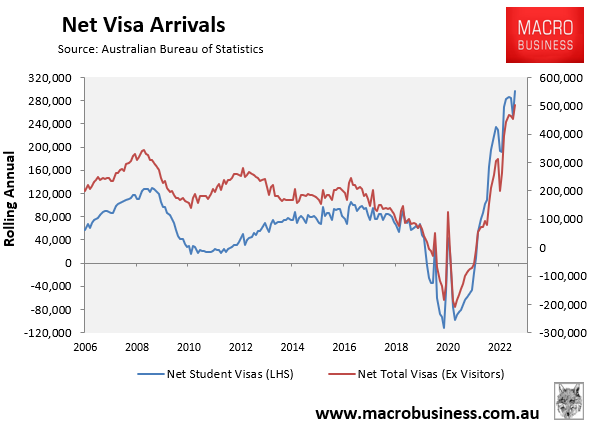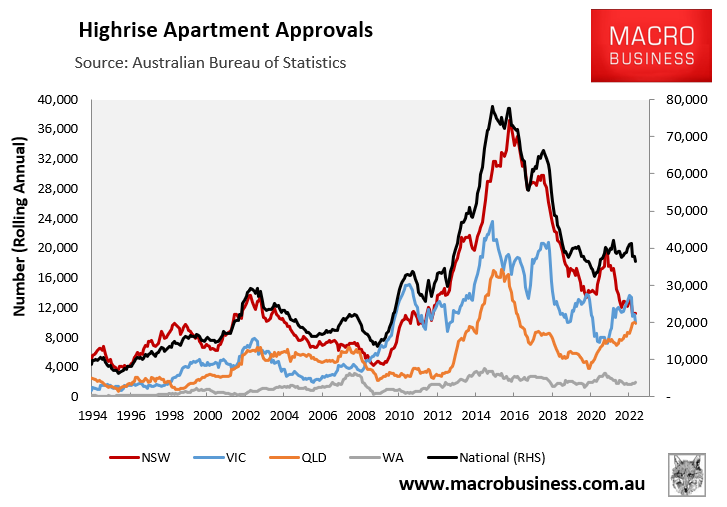Australian renters are facing a “diabolical situation” with new Domain data showing that unit rents are rising seven times faster than wages, with no relief in sight:

Asking rents for units across the capital cities increased by 26.1% in the year to June, outpacing the 3.6% increase in the ABS wage price index during the same period.
The median asking rent for detached houses across the capitals increased by 11.5% last year, more than three times faster than wages.
Separate CoreLogic data is less dire, but still shows unit rents soaring by 15%-plus across Sydney (17.8%), Perth (15.9%), Brisbane (15.8%) and Melbourne (15.3%):

Source: CoreLogic
Westpac senior economist, Matthew Hassan, said Australian renters face “a really diabolical situation”, driven by strong net overseas migration and a lack of supply:
“It’s a pretty nasty situation for renters, particularly those that are on low or fixed incomes, it’s a disaster”
“There’s not many options available for people as well. It’s the pointy end of a pretty bad shortage of housing that we’re finding at the moment”.
“Across the capital cities [the vacancy rate is] sub 1%. We’re at what I call frictional vacancy rates, which only captures the properties that are vacant when people are moving across properties”.
“It’s a really diabolical situation. When we look ahead it’s hard to see anything fixing the situation”.
“The obvious thing we need is additional rental supply, but there are long lags on supply response at the best of times, and at the moment, that seems to be taking longer”.
The number of apartments approved for construction is now hovering around 2012 levels:

The decline in apartment approvals comes as Australia is experiencing record net overseas migration (population increase), driven by record numbers of international students:

Following a record population rise of 500,400 in the 2022 calendar year, the 2023 federal budget forecasts a record 1.5 million net overseas migration over the five years to 2026-27, resulting in a 2.18 million increase in Australia’s population – comparable to five Canberra’s or one Perth:

Source: 2023 federal budget
The majority of this population growth will occur in Victoria (Melbourne) and New South Wales (Sydney), where apartment approvals have fallen the most:

Rising rental demand will be met with diminishing supply, causing the rental market to tighten even more and rents to skyrocket.
In short, the Albanese Government’s record immigration is a renter’s worst nightmare.
Rents will surge higher, placing severe financial strain on lower-income households and forcing thousands of Australians to become homeless.
Where will the record volumes of migrants and students arriving each year live when housing is already in short supply?
Renters and lower-income earners bear the brunt of Labor’s record ‘Big Australia’ immigration.

